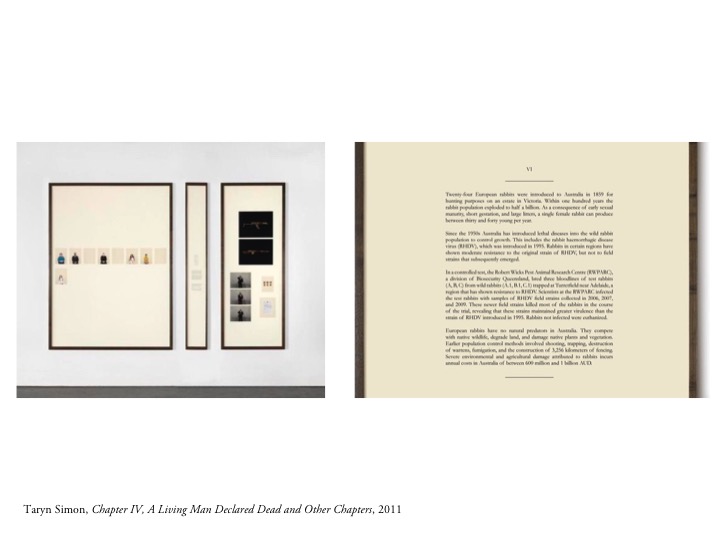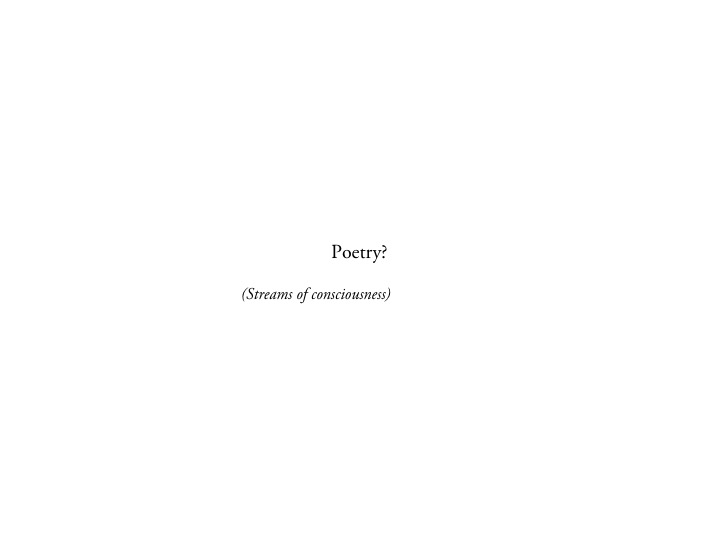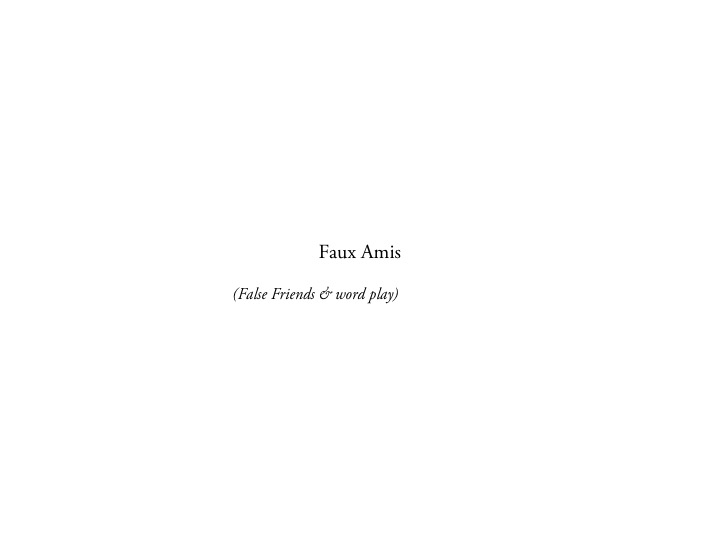Writing is a basic requirement of any work I make – whether it is to be part of the work, or is in a journal, or is self-reflective, I always write something somewhere, somehow. The key point between writing and photography in my work is the question of communication…am I going to be able to communicate more with you by showing you what I see or by telling you what I saw?

I have started to retrospectively look at how other artists use writing within their work – this is an extract of a body of work by Taryn Simon and the writing is used so directly it accompanies the photographs as part of the exhibit.
‘Each work in A Living Man Declared Dead is comprised of three segments. On the left of each chapter are one or more large portrait panels systematically ordering a number of individuals directly related by blood. The sequence of portraits is structured to include the living ascendants and descendants of a single individual. The portraits are followed by a central text panel in which the artist constructs narratives and collects details. On the right are Simon’s ‘footnote images’ representing fragmented pieces of the established narratives and providing photographic evidence.’

Bruce explores language with this example taken from an exhibition in 2013, using the words themselves as the basis for the piece of art, which is something I have been exploring as one of my experiments.

I have also considered what some might call ‘low brow’ art…those illustrations, posters or quotes overlayed onto photographs made by unknown authors that are found all over the internet. This particular unknown illustrator has taken a quote from Sylvia Plath’s ‘The Bell Jar’:
“My heartbeat boomed like a dull motor in my ears.” “I took a deep breath and listened to the old brag of my heart.” “I am, I am, I am.”

One aspect of my work is writing very descriptively about what I am seeing. I initially began this exercise to try and open up what a place actually is from my perspective in reality, not just from memory. This is something I have been purposely holding off doing until making a project about the place, because I don’t want to lose the initial reactions I have if I become used to the place. I also really had to find a reason to get out of the house, so I take a piece of paper with me to a coffee shop and sit by myself staring at people…something I don’t think people in this particular place are used to. I get a lot of looks that say ‘oh, poor little girl sat all by herself’.

This is my first attempt. It doesn’t really flow, the grammar is probably back to front, but I am in two minds as to whether I alter it, polish it up, for presentation (if I include some of this writing), or to just leave it as it came out of my pen (my preference).


Another aspect of my use of writing is more directly involved in using words against themselves for the question of communication, finding words that would imply paradox or ‘enigmaticalness’ when viewing the work in a gallery setting. I began with finding the ‘false friends’ or ‘faux amis’ – as with the majority of my ideas, it seems, I heard someone on TV say the word formidable to describe a french chef and it twigged that formidable in French has a completely different meaning. This start of my thought experiment has led me to think of words in our own language that are very similar but have entirely different meanings, such as on the right here, ‘lovely’ and ‘lonely’. My intentions behind this experiment of placing the words and meanings on top of each other is because of the way we read words being mostly from recognising the length and shape of them, rather than individual letters – so this, in theory, could be read as one or the other word and accompanying meaning, depending on who is reading it.
The point is, that my work is often retelling a narrative, with construction and a desire to romanticise everything at its core, based around a place that does not have only one truth to tell, but from collective memory probably has a very linear account of its history, and from personal memory has a true story behind it (that not even I will ever fully remember) – so this is paradoxical in itself – but the addition of language and writing deepens the ambiguity of the tale at the same time as creating new and alternative threads or narrative the audience may draw conclusions from.
